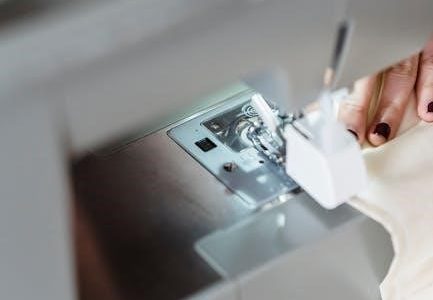The Jeep JK manual transmission fluid capacity is crucial for smooth operation. The NSG370 6-speed transmission requires 1.6 quarts or 1.5 liters of Mopar Manual Trans Lubricant or equivalent. Regular fluid changes every 30,000 miles ensure optimal performance and prevent wear. Correct fluid type and capacity vary by year and model, so always consult the service manual for precise specifications.
1.1 Overview of the Jeep JK Manual Transmission
The Jeep JK manual transmission, specifically the NSG370 6-speed, is known for its strength and reliability. Designed for durability, it features bronze synchronizer collars for smoother gear engagement; With a torque capacity of 272 ft-lbs input and up to 1300 ft-lbs output, it pairs well with Jeep’s transfer cases. Its robust design makes it a popular choice for both on-road and off-road enthusiasts, ensuring consistent performance in various driving conditions.
1.2 Importance of Transmission Fluid in the Jeep JK
Transmission fluid is essential for maintaining the Jeep JK manual transmission’s performance and longevity. It lubricates gears, synchronizers, and bearings, preventing wear and overheating. Proper fluid levels ensure smooth shifting, protect internal components from corrosion, and maintain optimal gear engagement. Using the correct type of fluid, such as Mopar Manual Trans Lubricant, is crucial for preventing damage and ensuring reliable operation in both on-road and off-road conditions.

Key Details About the NSG370 6-Speed Manual Transmission
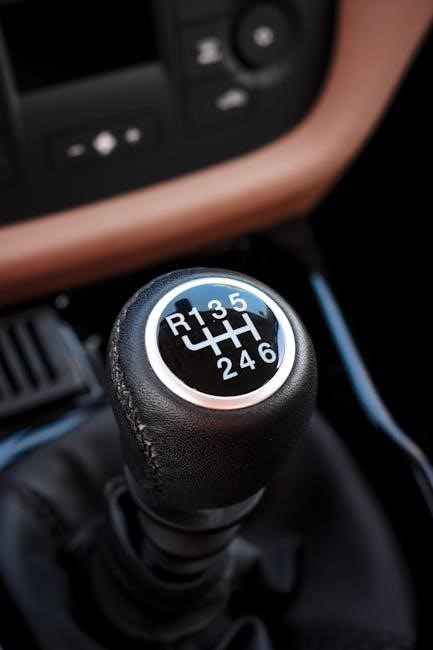
The NSG370 6-speed manual transmission is known for its strength and durability. It features a maximum input torque capacity of 272 ft-lbs and output limits of 1100-1300 ft-lbs, making it compatible with various transfer cases for optimal off-road performance.
2.1 Transmission Fluid Capacity Specifications
The NSG370 6-speed manual transmission in the Jeep JK requires 1.6 quarts (1.5 liters) of transmission fluid for optimal performance. However, practical capacity often exceeds this, around 1.9 quarts, to ensure proper lubrication. The official specification is 1.6 quarts, but slight variations may occur depending on the year and model. Always refer to the service manual for precise measurements to avoid overfilling or underfilling, which can affect transmission functionality and longevity.
2.2 Recommended Fluid Type for the NSG370 Transmission

The NSG370 6-speed manual transmission requires Mopar Manual Trans Lubricant or equivalent, such as Redline MTL or Pennzoil Synchromesh. Synthetic fluids are recommended for improved gear engagement and reduced wear. Using the correct fluid ensures smooth shifting, prevents overheating, and extends transmission life. Avoid using incorrect fluids, as they may damage the bronze synchronizer collars. Always consult the service manual for approved specifications to maintain optimal performance and durability.
Maintenance Schedule for the Jeep JK Manual Transmission
Regular maintenance for the Jeep JK manual transmission involves changing the fluid every 30,000 miles, including inspecting the magnetic drain bolt for metal shavings.
3.1 Recommended Service Intervals for Transmission Fluid Changes
The recommended service interval for the Jeep JK manual transmission fluid change is every 30,000 miles. This ensures optimal performance and prevents internal wear. The NSG370 transmission typically requires 1.6 quarts or 1.5 liters of Mopar Manual Trans Lubricant or equivalent. Using synthetic fluids like Redline MTL can enhance shift quality. Always refer to the service manual for precise specifications to ensure accuracy and maintain the transmission’s health.
3.2 Steps to Check and Inspect Transmission Fluid

To check the transmission fluid, gather tools like a socket wrench and drain pan. Locate the fill plug on the NSG370 transmission. Remove it to inspect the fluid level and condition. Check for contamination or degradation. Use the magnetic drain bolt to inspect for metal shavings, indicating internal wear. Ensure the fluid level is at the recommended capacity, as outlined in the service manual. Regular inspections help maintain smooth operation and prevent costly repairs;
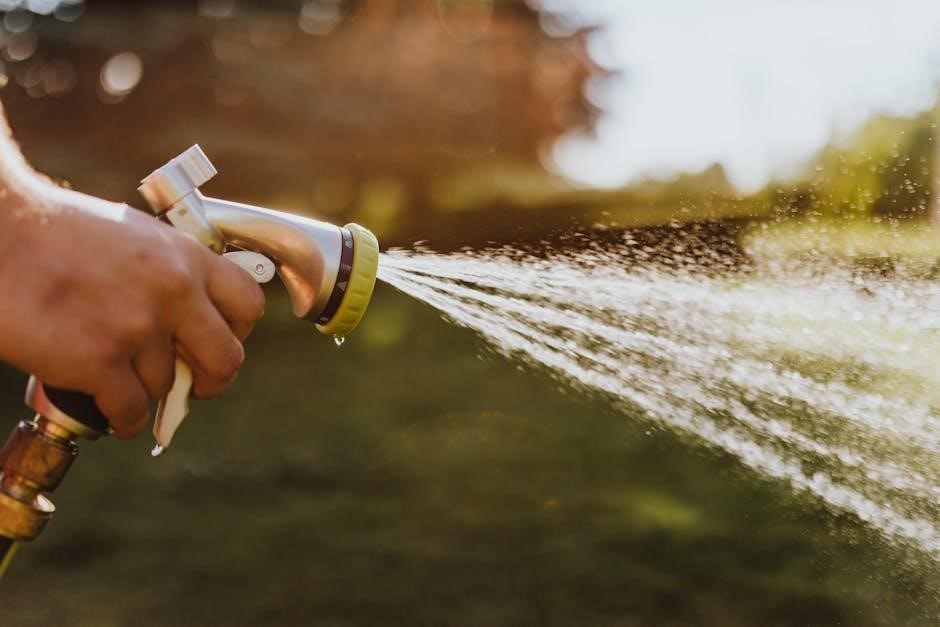
Troubleshooting Common Issues
Common issues include low fluid levels, slipping, or hesitation. Check for degraded fluid, contamination, or leaks. Address shifting problems by inspecting fluid condition and level promptly.
4.1 Signs of Low or Degraded Transmission Fluid
Signs of low or degraded fluid include slipping gears, hesitation, or grinding noises. Shuddering during acceleration or difficulty shifting into higher gears, especially when cold, may indicate fluid issues. If fluid levels are low, the transmission may overheat or fail to engage gears smoothly. Over time, degraded fluid loses its lubricating properties, leading to increased wear on internal components. Regular inspection and fluid changes are essential to prevent these issues.
4.2 Addressing Shifting Problems and Noise
Shifting problems and noise in the NSG370 transmission often stem from low or degraded fluid. Grinding, whining, or clunking sounds during gear changes can indicate worn components or insufficient lubrication. Regular fluid changes with synthetic options like Redline MTL or Pennzoil Synchromesh can resolve these issues. If problems persist, inspecting and replacing worn synchronizer collars or bearings may be necessary to restore smooth operation and eliminate noise.
Transmission Strength and Torque Capacity
The NSG370 transmission features an input torque capacity of 272 ft. lbs. and output torque limits between 1100-1300 ft. lbs., ensuring robust performance for off-road demands.
5.1 Input and Output Torque Limits of the NSG370
The NSG370 transmission has an input torque capacity of 272 ft. lbs., as specified by the manufacturer. The output torque limits range between 1100-1300 ft. lbs., making it a reliable choice for both on-road and off-road applications. This torque capacity ensures smooth power delivery and compatibility with various transfer cases, such as the NP231 and NP241OR, enhancing the Jeep JK’s overall performance and durability in demanding conditions.
5;2 Compatibility with Transfer Cases
The NSG370 transmission is compatible with popular transfer cases like the NP231 and NP241OR. This compatibility ensures seamless power distribution between the transmission and four-wheel-drive system. The transmission’s torque capacity aligns well with these transfer cases, providing efficient performance in both on-road and off-road conditions. Proper fluid maintenance is essential to maintain this compatibility and ensure optimal functionality of the drivetrain components.
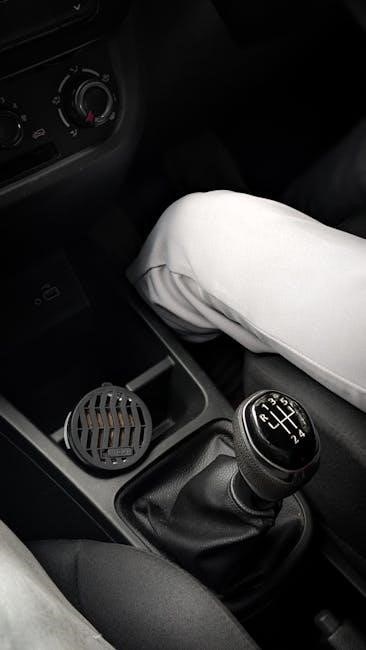
Fluid Capacity Variations and Measurements
Fluid capacity for the NSG370 varies slightly, with official specs at 1.6 quarts and practical measurements often showing 1.9 quarts. This variation ensures proper transmission function.
6.1 Official vs. Practical Fluid Capacity
The Jeep JK manual transmission fluid capacity varies between official and practical measurements. Official specifications state 1.6 quarts (1.5 liters) for the NSG370 transmission, as outlined in the service manual. However, practical measurements often show a slightly higher capacity of 1.9 quarts due to fill hole dynamics and transmission case design. This variation ensures proper fluid levels during operation and maintenance. Always consult the manual or expert guidance for accurate filling.
6.2 How to Accurately Measure Fluid Levels
To accurately measure Jeep JK manual transmission fluid levels, locate the fill hole on the NSG370 transmission. Use a 14mm Allen wrench to remove the plug and fill until fluid begins to ooze out, indicating the correct level. The total fill capacity is approximately 1.6 to 1.9 quarts, depending on the transmission’s condition and design. Always refer to the service manual for precise specifications to avoid overfilling.
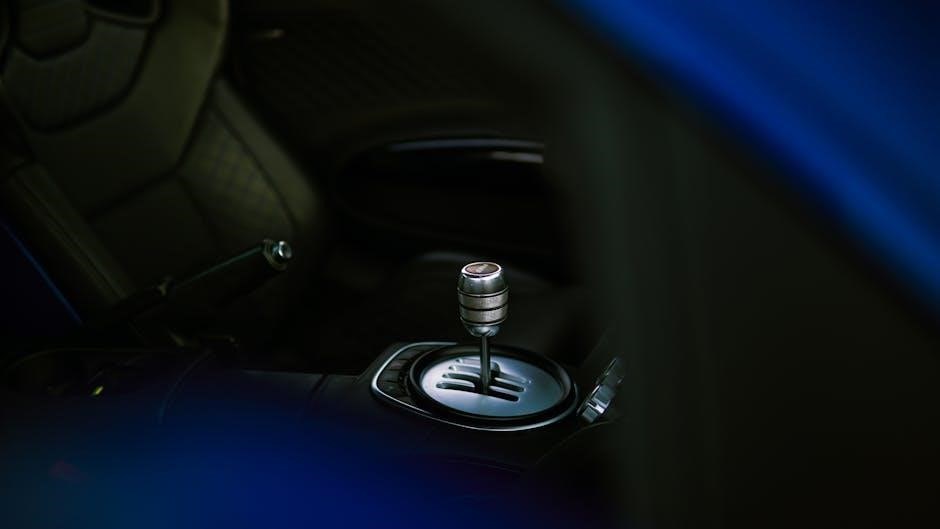
Special Considerations for Fluid Changes
When changing fluid, synthetic options like Redline MTL or Pennzoil Synchromesh are recommended for improved performance. Overfilling can cause damage, so ensure precise measurement. Use Mopar ATF 4 or equivalent for compatibility and optimal transmission function.
7.1 Synthetic vs. Conventional Fluid Options
Synthetic transmission fluids, such as Redline MTL or Pennzoil Synchromesh, offer superior performance, better temperature stability, and longer fluid life compared to conventional options. They provide smoother shifting and enhanced protection for synchronizers and gears. While conventional fluids are cheaper, synthetics are highly recommended for the NSG370 transmission due to their improved lubrication properties and durability, especially in extreme driving conditions. Always choose fluids meeting Chrysler MS-9224 specifications for optimal compatibility and performance.
7.2 Risks of Overfilling the Transmission
Overfilling the NSG370 transmission can lead to foaming, reducing lubrication efficiency and potentially damaging internal components. Excess fluid may also cause pressure buildup, leading to seal or gasket failure. Additionally, overfilling can result in fluid escaping through the ventilation system, creating mess and requiring costly repairs. Always adhere to the recommended 1.6 quarts capacity to avoid these issues and ensure proper transmission function.
Resources for Further Reference
Consult the Jeep Wrangler JK Service Manual for detailed specs and procedures. Online forums and communities provide valuable insights and user recommendations for transmission maintenance and fluid changes.
8.1 Jeep Wrangler JK Service Manual
The Jeep Wrangler JK Service Manual is a comprehensive resource for transmission details. It outlines fluid capacities, torque specifications, and maintenance schedules. The manual specifies 1.6 quarts or 1.5 liters for the NSG370 transmission and recommends Mopar Manual Trans Lubricant. It also covers transmission strength, with input torque up to 272 ft. lbs. and output limits between 1100-1300 ft. lbs. This guide is essential for owners and technicians ensuring accurate repairs and maintenance.
8.2 Online Forums and Community Recommendations
Online forums offer valuable insights from Jeep JK owners and technicians. Many recommend using synthetic fluids like Redline MTL or Amsoil Synchromesh for improved shift quality. Users report reduced noise and smoother operation after fluid changes. Communities also discuss practical tips, such as measuring fluid levels accurately and avoiding overfilling. These forums provide real-world experiences and solutions for maintaining the NSG370 transmission effectively.
Proper fluid capacity and regular maintenance are key for the Jeep JK manual transmission. Using the correct fluid ensures smooth operation and prevents premature wear.
9.1 Summary of Key Points
The Jeep JK manual transmission fluid capacity is 1.6 quarts or 1.5 liters for the NSG370 6-speed. Regular fluid changes every 30,000 miles are essential for optimal performance. Using Mopar Manual Trans Lubricant or equivalent ensures smooth operation and prevents wear. Proper fluid levels and type are critical, as incorrect usage can lead to shifting issues or noise. Always consult the service manual for precise specifications tailored to your Jeep JK model and year.
9.2 Final Tips for Maintaining Your Jeep JK Manual Transmission
Regularly inspect fluid levels and top off as needed to prevent damage. Change fluid every 30,000 miles using Mopar Manual Trans Lubricant or equivalent. Synthetic fluids like Redline MTL can enhance performance. Always check the magnetic drain plug for metal shavings during service. Avoid overfilling, as it can lead to leaks or damage. Proper maintenance ensures smooth shifting and extends transmission life for your Jeep JK.


